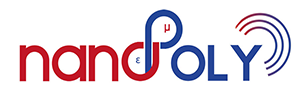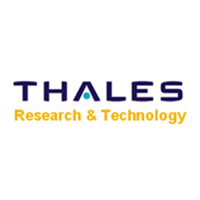Contact
Afshin Ziaei
afshin.ziaei@thalesgroup.com
Traditionally described as “professional electronics”, the Thales Group’s businesses are primarily dedicated to critical information systems for defence, aerospace (aeronautics and space), and security applications, in particular for ground transportation. Information systems and infrastructures are considered critical if they provide services that are essential for people’s lives and livelihoods and underpin a country’s economic and political machinery.
Thales expends 80% of its R&D efforts on developing large scale systems for communications and airspace control, secure systems for public administration, operational command/control systems and combat systems; standalone and onboard equipment (sensors, radios, cameras, avionics, radar, sonar, etc.); and technology building blocks, i.e., subsystems and critical components. The remaining 20% (about €400 m) is devoted to preparing for the future through upstream research or demonstrators to test new concepts, equipment and systems.
Thales designs and delivers critical information systems for customers in aerospace, security and defence. These activities draw extensively on dual-use technologies, but world-class in-house expertise and capabilities are required to develop competitive systems. That is why the Group works hard to sustain the skills needed to mature critical technologies and fulfil its role as a systems and equipment architect.
Thales has created cooperative cross-functional structures to address key issues of common interest to all Group entities, focusing on:
- complex systems engineering,
- microwave, optical and optronics components,
- computer architecture and software design tools,
- information processing and data fusion,
- secure Internet technologies,
- security technologies.
At European level, Thales has played a role in every EU Framework R&D Programme since the ESPRIT programme in the early 1980s, working on many European cooperation projects. So today, Thales naturally holds a leadership position on European technology platforms. The Group has contributed significantly to projects such as ACARE in the aeronautical sector, ARTEMIS for embedded systems, ENIAC for micro- and nanotechnologies, NESSI for software, systems and services, and e-mobility for mobile communications and other mobile electronic applications. These projects rely on very close partnership between large industrial contractors, research centres and SMEs and SMIs, which contribute key innovative technologies that will be vital competitive assets for Europe in the years ahead.
Thales Research & Technology (TRT) plays a central role in the Group’s corporate research organisation: TRT comprises four research entities in France, the UK, the Netherlands and Singapore, as well as laboratories managed jointly by corporate research and Group subsidiaries and a network of research departments in operating units.
By investing more than €60 m in refurbishing TRT’s facility in France, located since 2006 on the campus of the Ecole Polytechnique engineering school, Thales confirmed its intention to play a full part in the French and international scientific community. This new research centre was officially opened in November 2006 by France’s Minister for Research and Higher Education at an event organised to showcase major areas of scientific research in which Thales is active:
- the software factory to address the complexity crisis through the introduction of virtual prototyping, model assembly design, automatic production and validation methods and collaborative working, designed to achieve breakthroughs in development productivity and quality,
- analysis of complex situations, presented in the form of an image that human operators can use to ensure superior decision-making through effective management of critical information,
- new Internet technologies and applications focusing on network security, through integration of the latest technologies in authentication, biometrics and transmission security to protect large-scale applications for e-government (tax portal, security of public places and heritage sites, electronic patient records), banking (e-ticketing and payment systems) and infrastructures (transport and shipping traffic),
- night-vision systems, decamouflaging, decoy discrimination, surveillance of critical zones or infrastructures, quantum-well infrared photodetectors (QWIP) and polarimetric imaging, all dual-use technologies used to detect clinical anomalies or to combat terrestrial and marine pollution,
- home security technologies like semi-conductor materials for gallium-arsenide microwave monolithic integrated circuits (GaAs MMICs) used in radar power amplifiers and QWIP arrays in night-vision cameras. In 2004, Thales and Alcatel decided to set up a joint laboratory, Alcatel-Thales III-V Lab, to mature home security technologies. Such dual-use technologies underpin critical components that are key system elements with restricted availability, notably due to export controls, – detectors for chemical and biological systems offering economical, effective solutions for medical, security (detection of B&C agents, explosives and drugs) and environmental applications,
- breakthrough areas, such as highly secure software, secure communications, microwave transmission used in radars and for countermeasures, highly precise navigation or biological marking and detection, where teams are working in concert with the national and international scientific community at the cutting edge of mathematics, the ultimate dimensional limits of materials and ultra-short timescales.
The efforts of TRT’s teams to achieve world-class excellence were recognised in 2007 with the award of the prestigious Nobel Prize to Albert Fert, working on nanotechnologies for the joint Thales/CNRS research unit. TRT conducts technology research activities close to its partners. Besides the French research centre now on the Ecole Polytechnique campus, the Dutch research centre is located at Delft University and the Singapore centre is operating a laboratory at Nanyang Technological University (NTU). TRT France employs 220 full-time staff, 40 doctoral students and 50 outside researchers (from CNRS, Ecole Polytechnique, IOTA and universities). In the United Kingdom, the Reading centre has direct connections with major British universities including Cambridge, Surrey and Imperial College, London, and employs 120 staff and 15 doctoral students. In the Netherlands, the TRT team is based on the campus of Delft University and is a joint operation by Delft and Amsterdam universities, TNO, Thales Nederland and TRT. It employed 15 people in 2006. In Singapore, the Thales Technical Center Singapore (TTCS) had a 15-strong team in 2006. TTCS was set up in 2003 in close cooperation with local technology institutes, notably NTU for the joint Thales@NTU project.
The works undergone by THALES in the field of RF MEMS dates back from 1994, and have been initially related to various studies carried out in the field of Wireless Sensors Remotely Powered by Microwaves. These studies revealed the need for a special function making it possible to transfer in free space digital data flows on 2.45 GHz frequency carriers, with a drastic constraint of reduced power dissipation (P < 5 µW). The traditional solution using a VCO being largely inefficient, a new concept based on a MEMS microwave frequency translator was designed and simulated with specific tools by TRT, then implemented in SiO2/Si technology thanks to a close co-operation with ESIEE, and finally successfully tested in the field, during a test on wireless sensors embedded in concrete. Since 1999, TRT has concentrated its efforts on RF MEMS technologies for the development of active antennas. Among the different RF MEMS subjects in which TRT is now actively involved, the main functions under study are: power switches, MEMS power limiters, and controllable inductors and capacitors. The RF MEMS skills of the TRT team cover different levels of design expertise:
- Choice of the physics of the devices
- Design and simulation of innovative RF-MEMS functions
- Performance analysis (from the physical to the functional level) using proprietary and commercial software simulators
- Operational constraints analysis (from the characteristics of the signals to be processed down to the packaging performance simulation)
- Participation to the technological choices (co-operation with the technology providers) derived from operational and functional choices
Resources:
The facilities, located in class 1000 and clean room areas, include: Chemical bench, Contact Mask Aligner for backside process (CD 1 μm), DC on wafer test station, E-beam evaporator, Electron Beam Lithography (CD 0.1μm), Inductively Coupled Plasma (ICP), Joule evaporator, Lapping & polishing Unit, Plasma Enhanced Chemical Vapour Deposition (PECVD), Plating bench, Reactive Ion Etching (RIE), RF on wafer test station, Sputtering, ALD (Atomic Layer Deposition)
Role in NanoSmart:
TRT is the coordinator of the project. In more detail TRT will:
- Lead WP1, WP6 (Dissemination and exploitation) and WP7 (Project management).
- Design and develop (fabricate and test) of CNT based switches (RF MEMS)
- Development (Fabrication and characterization) of CNT- reconfigurable filters
- Participate in FET Development ( Fabrication and characterization)
- Design, build and validate the 1st NANOSMART demonstrator
Owner of NANOSMART demonstrator
Key personnel:
Dr. Afshin Ziaei (male) received the B.S. degree in Electronics Engineering from the University of Paris XI (Orsay) in 1997 and the M.S. degree in Electronics and Microwaves Engineering from the University of Paris VI (Jussieu) in 1998 and he received Ph.D. degree in microwave from the Department of Electronics Engineering at CNRS-IEMN (Institut d’Electronique et de Microélectronique et de Nanotechnologie) in 2001. He joined the research engineer at Thales Research & Technology, France, in 1999. His research interests include the development, design, fabrication, and characterization of RF MEMS (Micro Electro Mechanical Systems) components such as mechanical switches, transmission lines, etc. He was involved or in charge of many French or European Projects (such as NANO RF, MINIMEMS, ARHMS, SATURNE, NANOPACK, NANOTEG, NANOTHERM, NANOCOM, NANOTEC, SMARTPOWER, (coordinator of projects), He is a member of IEEE.
Dr. Shailendra Bansropun (1974) (male) graduated with a Bachelor degree in electronics/telecommunications and a Ph.D. in heterojunction bipolar transistors from the University of Sheffield (UK) in 1996 and 2001 respectively. Following a couple of years of engineering and design experience in the free space optics and telecommunication industry, he then moved on to Thales Research and Technology where he currently holds the post of research and technology engineer within the common technological platform in Palaiseau, France. His current research focuses on the technological aspects and innovative approaches in the various fields covering photonic devices, quantum dots devices, sub-wavelength diffractive optics as well as MEMS devices among others. He has co-authored over 25 publications and has also been involved in several European projects (BIGBAND, TERANOVA, KORRIGAN, ANSWER).
Stéphane XAVIER (male) was born in 1980. He received his Master in thin layer and surface engineering from the University Louis Pasteur de Strasbourg (France) in 2005. He then pursued his scientific career with a Research and Technological Diploma from the University d’Evry-Val-d’Essonne( France) in 2007. He joined Thales Research & Technology in 2007 and his specialist field has been cold cathodes based on carbon nanotubes for field emission and microwave tubes applications. Currently in the Technological and Submicronic Process Lab, he is responsible of the electron-beam lithography equipment and the associated research development. Over the past 4 years, he has been heavily involved in several european and national projects (Spiders, Copernicus, Technotubes, Sims, Gospel, NANORF, Opther).
Dr. Matthieu Le Baillif (male) received the B.S. degree in Electronics Engineering from the University of Lille I in 2003 and the M.S. degree in Electronics and Microwaves Engineering from the University of Limoges (XLIM) in 2005 and he received Ph.D. degree in microwave from the Department of Electronics Engineering at CNRS-IEMN (Institut d’Electronique et de Microélectronique et de Nanotechnologie) in 2012. He joined the research engineer at Thales Research & Technology, France, in 2005. His research interests include the development, design, fabrication, and characterization of RF MEMS (Micro Electro Mechanical Systems) as well as Nano-Antenna and MEMS/NEMS switches and other RF components such as mechanical switches, transmission lines, etc. He was involved in many French or European Projects (such as MEGA, SATURNE, MiniMEMS, NANOCOM, NANOTEC, PEA MEMS-RF, ZoneSEC.)
Dr. Paolo Martins (1979) (male) graduated with a Master degree in Micro and Nanotechnologies from University of Claude Bernard Lyon (FR) in 2005. He obtained his Ph.D. on mechanical characterization of submicron thin films for MEMS and NEMS applications from the National Institute of Applied Sciences of Lyon (FR) in 2009. In 2009, he moved to Thales Research and Technology as research engineer where he is responsible of the RF MEMS technology development. His current research focuses on the technological aspects and innovative approach in the field of RF MEMS applications. He has co-authored in several publications and patents and he was involved in several European projects (MEGA, SATURNE, MiniMEMS, NANOCOM, NANOTEC, PEA MEMS-RF, ZoneSEC.)

